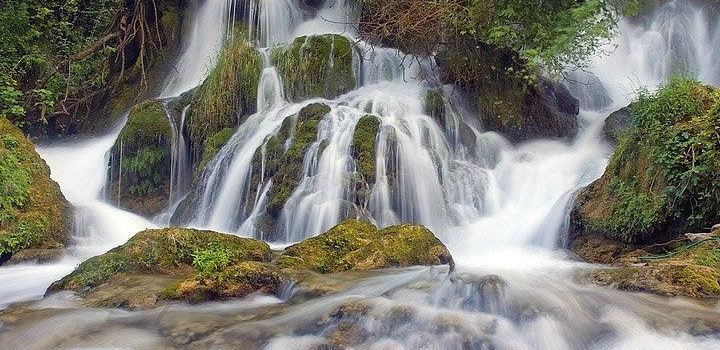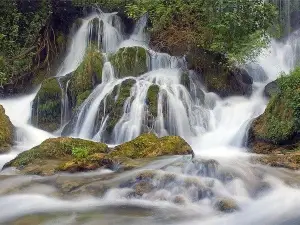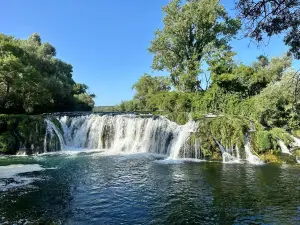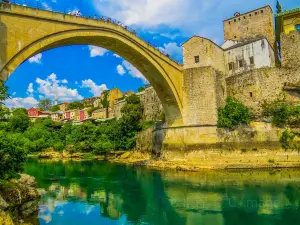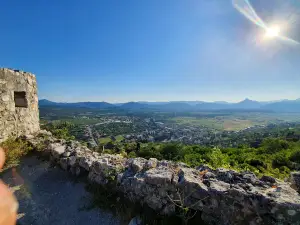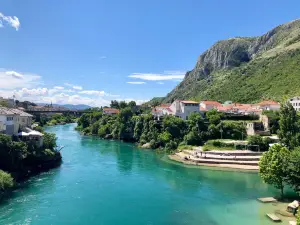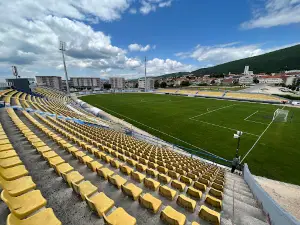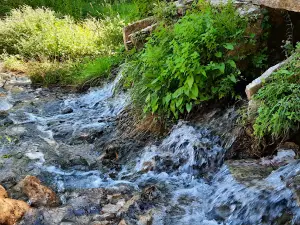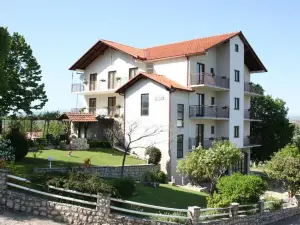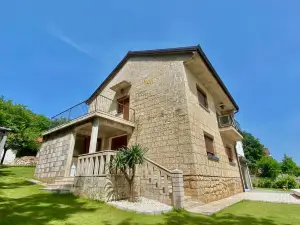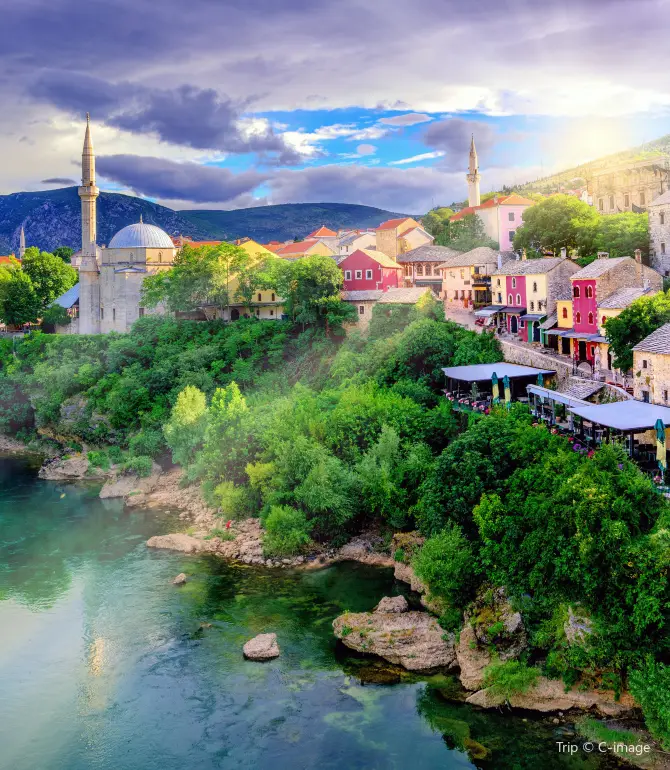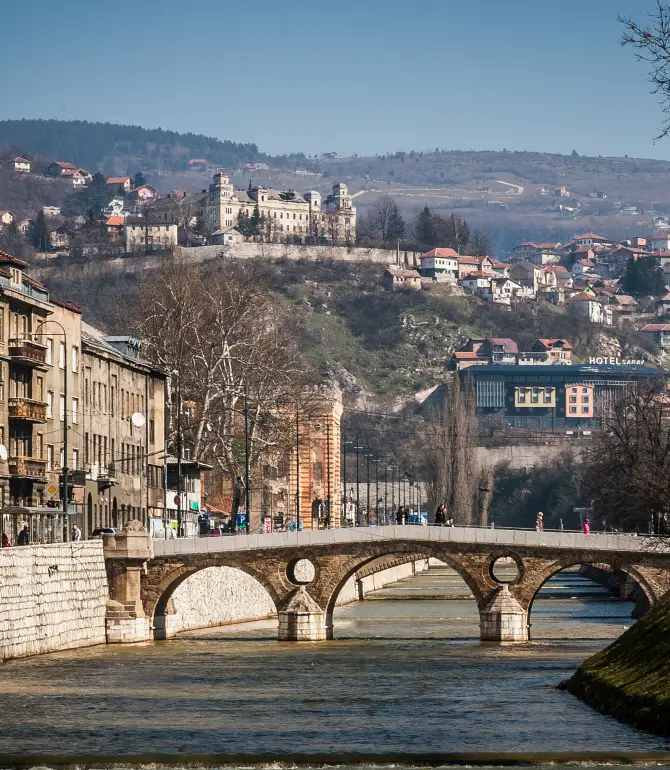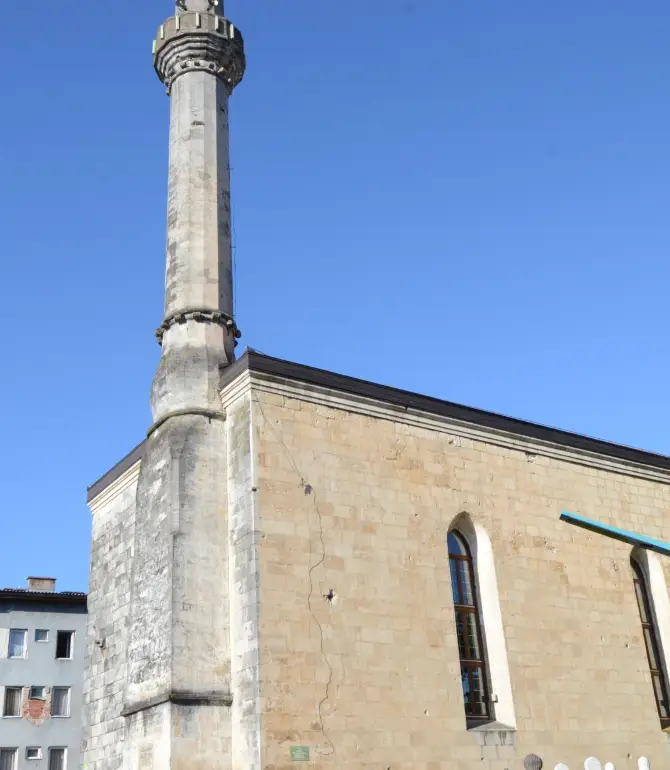Photos
West Herzegovina Canton
Things to do in West Herzegovina Canton (2025): Top nearby activities,popular attractions,itinerary planning,weather,accommodation,food,transportation,and more - all you need to know (updated August, 2025) | Trip.com
About West Herzegovina Canton
West Herzegovina Canton Local Experiences Map
View Local Experiences on Map
Things to do in West Herzegovina Canton
What to Do
Looking for things to do in West Herzegovina Canton? We provide up-to-date info on everything from must-see scenic spots to local hangouts.
View More
Kravica Waterfall
4.0
This user hasn't left any comments yet
Natural scenery
Opening hours: 07:00-20:30
Koćuša Waterfall
3.3
This user hasn't left any comments yet
Please contact the attraction to confirm specific opening hours
Old Bridge Mostar
6.3
4.6/540 Reviews
Historic buildings
Open year round, 24/7
 大海金国:“Stari Most (also known as the Old Bridge of Mostar) is a 16th-century single-arch stone bridge in Mostar, Bosnia and Herzegovina, spanning the Neretva River. After standing for over 400 years, the bridge was destroyed on November 9, 1993, during the Bosnian War. After reconstruction, it reopened on July 23, 2004. In 2005, the bridge and surrounding area were designated a UNESCO World Heritage Site.
A must-see in Bosnia and Herzegovina! Encounter Ottoman history under Mostar's Old Bridge. Recommended: A 16th-century Ottoman masterpiece! A leap of faith for bridge jumpers! 🌉
Transportation Tips
📍Address: Stari Most, Mostar 88000, Bosnia and Herzegovina
🚗Drive/Bus: 2 hours from Sarajevo, within walking distance of the Old Town.
3 Must-Dos
Watch the Old Bridge Jump: Traditional diving performances are held every day at noon! Locals jump into the Neretva River from the 24-meter-high bridge (tips allow for impromptu jumps).
📸Camera location: Rocky banks east of the bridge (morning with favorable light).
Visit the Old Bazaar: Ottoman-style bronzeware street at the bridge head, handmade coffee pots, and blue-eye pendants.
Recommendation: Lamb under sac at Šadrvan Restaurant.
Nighttime Magic Moment: At sunset, the bridge illuminates and the minaret calls to prayer evoke a sense of time travel!
Pitfall Prevention Tips
⚠️ The cobblestones are extremely slippery! Wear non-slip shoes.
⚠️ Bargain on souvenirs starting at 50% off.
#BalkanTravel #Old Bridge of Mostar #Bosnia and HerzegovinaTourism #OttomanArchitecture #UniqueEurope”
大海金国:“Stari Most (also known as the Old Bridge of Mostar) is a 16th-century single-arch stone bridge in Mostar, Bosnia and Herzegovina, spanning the Neretva River. After standing for over 400 years, the bridge was destroyed on November 9, 1993, during the Bosnian War. After reconstruction, it reopened on July 23, 2004. In 2005, the bridge and surrounding area were designated a UNESCO World Heritage Site.
A must-see in Bosnia and Herzegovina! Encounter Ottoman history under Mostar's Old Bridge. Recommended: A 16th-century Ottoman masterpiece! A leap of faith for bridge jumpers! 🌉
Transportation Tips
📍Address: Stari Most, Mostar 88000, Bosnia and Herzegovina
🚗Drive/Bus: 2 hours from Sarajevo, within walking distance of the Old Town.
3 Must-Dos
Watch the Old Bridge Jump: Traditional diving performances are held every day at noon! Locals jump into the Neretva River from the 24-meter-high bridge (tips allow for impromptu jumps).
📸Camera location: Rocky banks east of the bridge (morning with favorable light).
Visit the Old Bazaar: Ottoman-style bronzeware street at the bridge head, handmade coffee pots, and blue-eye pendants.
Recommendation: Lamb under sac at Šadrvan Restaurant.
Nighttime Magic Moment: At sunset, the bridge illuminates and the minaret calls to prayer evoke a sense of time travel!
Pitfall Prevention Tips
⚠️ The cobblestones are extremely slippery! Wear non-slip shoes.
⚠️ Bargain on souvenirs starting at 50% off.
#BalkanTravel #Old Bridge of Mostar #Bosnia and HerzegovinaTourism #OttomanArchitecture #UniqueEurope”Franciscan Monastery
2.6
This user hasn't left any comments yet
Open today at 08:00-11:30, 15:30-17:30
Crkva Bezgrješnog začeća Blažene Djevice Marije
2.6
This user hasn't left any comments yet
Fortress of Herzog Stjepan Vukčić Kosača
2.6
This user hasn't left any comments yet
Historic buildings
Open year round, 24/7
Neretva River
5.6
4.6/55 Reviews
Natural scenery
Open year round, 24/7
 枫原没有万叶:“The Neretva River is a flowing emerald code in the Balkan Peninsula - it cuts through the chest of the karst landform, and uses the millennium turbulence to polish out the arc of the Mostar Old Bridge. On the riverbed, the stone foundation of the Ottoman Empire and the shells of the war years are sleeping. When divers jump into the cracks of time, the green water becomes a canvas, dyeing the 400-year-old bridge shadow, the mottled bullet-hole walls on both sides, and the silhouette of the monastery on the cliff into a dynamic historical scroll. The river water not only hides the ingenuity of geological movement, but also surges with the alternating pulse of war and peace. Every ripple tells us: nature and civilization have always coexisted in each other's reflection.”
枫原没有万叶:“The Neretva River is a flowing emerald code in the Balkan Peninsula - it cuts through the chest of the karst landform, and uses the millennium turbulence to polish out the arc of the Mostar Old Bridge. On the riverbed, the stone foundation of the Ottoman Empire and the shells of the war years are sleeping. When divers jump into the cracks of time, the green water becomes a canvas, dyeing the 400-year-old bridge shadow, the mottled bullet-hole walls on both sides, and the silhouette of the monastery on the cliff into a dynamic historical scroll. The river water not only hides the ingenuity of geological movement, but also surges with the alternating pulse of war and peace. Every ripple tells us: nature and civilization have always coexisted in each other's reflection.”Mokri Dolac Stadium
2.5
This user hasn't left any comments yet
Please contact the attraction to confirm specific opening hours
Miškić Bus
2.5
This user hasn't left any comments yet
Please contact the attraction to confirm specific opening hours
Where to Stay
Discover the most popular places to stay in West Herzegovina Canton, complete with recommendations from fellow travelers and special hotel offers
View More
Guest House Green River
4.7/5This user hasn't left any comments yet
Apartman IM7 Međugorje
4.8/5This user hasn't left any comments yet
What to Eat
Want to eat like a local? Don't miss out on these top West Herzegovina Canton dishes and foodie spots.
View More
VIVA Caffe Lounge Bar
4.0/5This user hasn't left any comments yet
Restoran Lavanda
This user hasn't left any comments yet
La Cascada
This user hasn't left any comments yet
Irish Pub Spancil Hill
5.0/5This user hasn't left any comments yet
Pizzeria Ajduk
This user hasn't left any comments yet
HACIENDA beer garden - club
This user hasn't left any comments yet
Konoba Vistica
This user hasn't left any comments yet
Restoran Domano
This user hasn't left any comments yet
West Herzegovina Canton Moments: Through Travelers' Eyes
Post

adventuremoments
🌿🏞 Wild Escape: Kravica Waterfall Adventure
PassportVibes
18

postandearn
Kravica Waterfalls: Beautiful Natural Gem 💎
littledaizy
![[Bosnia-Herzegovina] A bridge for peace](https://ak-d.tripcdn.com/images/1mi38224x90usv6rdB1FA_W_320_0_R5.jpg?proc=source/trip)
0円旅
[Bosnia-Herzegovina] A bridge for peace
uchako

A 10-day in-depth tour of Montenegro and other countries during the short holiday
RoamingExplorer
1

A 14-Day Tour of Montenegro and More: The Ultimate Guide Has Arrived!
FREYA MAY
2

11-day tour of Serbia and other countries, the best choice for a short holiday
EerikkiKoskinen
1

Visa-free multi-country tour including Montenegro
Abigail@Martin
1

Don't miss the hot springs in Montenegro and other visa-free countries!
Lily~Hayes
2
View More
Popular Types of Attractions in West Herzegovina Canton
Historical attractions | Cultural institutions | Museums | Themed exhibition halls | Nature and wildlife | Natural scenery | Mountain climbing | Sightseeing tours | Outdoor activities | Mountain climbing | Cycling | Water sports | Leisure activities | Spa/massage | Farms and pastures | Exhibitions & events
Popular Attractions in West Herzegovina Canton
Kulturno Športski Centar Ljubuški | Crkva svete Kate | StariWC | Trg širokobrijeških žrtava | Ostružnjak | Vrelo Vrioštice Vitina | ART STUDIO "ERO" | Franciscan Monastery | Mokri Dolac Stadium | Sources Of The River Lištica | Fortress of Herzog Stjepan Vukčić Kosača | Franjevački muzej i galerija Široki Brijeg / Franciscan Museum and Gallery Široki Brijeg | Trg Svetog Ante | IZVOR KLOKUN | Grebine | Stadion Pecara | Zvonik sv. Ilije Proroka | Crkva 12 Apostola | Katkin Bunar | Džamija Ali-Bega Kapetanovića
Popular Ranked Lists
Top 50 Must-Visit Restaurants in Chiang Mai | Popular Premium Hotels in Yamanakako | Popular Best Things to Do in Ziyang | Top 50 Must-Visit Restaurants in Frankfurt | Top 50 Must-Visit Restaurants in Chaozhou | Top 50 Must-Visit Restaurants in George Town | Popular Best Things to Do in Dongxing | Top 10 Luxury Hotels near Nairobi | Popular Premium Hotels in Kirov | Popular Premium Hotels in Karbala | Popular Best Things to Do in Changji Prefecture | Top 50 Must-Visit Restaurants in Phuket | Popular Best Things to Do in Ziyuan | Popular Best Things to Do in Nan'ao | Top 10 Best Things to Do in Jingxi | Popular Luxury Hotels in Fes-Meknes | Popular Luxury Hotels in Al Madinah | Popular Best Things to Do in Huidong | Popular Luxury Hotels in Nyeri | Top 10 Trending Attractions in Xi'an | Popular Trending Attractions in Vienna | Top 50 Must-Visit Restaurants in Hanoi | Popular Luxury Hotels in Almaty | Top 10 Trending Attractions in New York | Top 10 Trending Attractions in Osaka | Top 10 Trending Attractions in Wuhan | Popular Trending Attractions in Dunhuang | Popular Luxury Hotels in Nizwa | Top 50 Must-Visit Restaurants in Osaka | Top 10 Luxury Hotels in Southern Province
Popular Restaurants in West Herzegovina Canton
VIVA Caffe Lounge Bar | Restoran Lavanda | Restaurant "MOST" | La Cascada | Irish Pub Spancil Hill | Pizzeria Ajduk | La Strada caffe pub bar | HACIENDA beer garden - club | Konoba Vistica | Kaktus caffe-grill | Restoran Domano | Vikend | Restoran Vrelo Borak | Grill Rade | Konoba Kocusa | Prirodni Vodeni Park "Kocusa" | Konoba Planinić | Ceveljusa | Bago | Basilico Gastro Bar | Lukas | Bezdan 21 | Caffeteria Benedict | Slastičarnica "Ruža" | Caffe bar Kum 2 | Kruško | Gradska Kavana | U.R Parking Kravice | Sweet Mistake | Konoba kod Dade
Popular Destinations
Shengsi Travel | Arezzo Travel | Hoffman Estates Travel | Islay Travel | Calpe Travel | Jessamine County Travel | Anapsky District Travel | Beaufort County Travel | Mussoorie Travel | Cuneo Travel | Yuanjiang Travel | Halifax Regional Municipality Travel | Naracoorte Lucindale Council Travel | Hunt County Travel | Bihor Travel | Redland City Travel | English Harbour Travel | Aberdeenshire Travel | Coos Bay Travel | Freudenstadt Travel | Kecskemet Travel | Phetchaburi Province Travel | Madison Travel | Nasu Travel | Troon Travel | Tianshui Travel | Alxa Left Banner Travel
Recommended Attractions at Popular Destinations
Popular Attractions in Bangkok | Popular Attractions in Manila | Popular Attractions in Tokyo | Popular Attractions in Taipei | Popular Attractions in Hong Kong | Popular Attractions in Seoul | Popular Attractions in Kuala Lumpur | Popular Attractions in Los Angeles | Popular Attractions in Shanghai | Popular Attractions in New York | Popular Attractions in Shenzhen | Popular Attractions in Osaka | Popular Attractions in Singapore | Popular Attractions in London | Popular Attractions in Guangzhou | Popular Attractions in San Francisco | Popular Attractions in Beijing | Popular Attractions in Macau | Popular Attractions in Bali | Popular Attractions in Jakarta | Popular Attractions in Paris | Popular Attractions in Ho Chi Minh City | Popular Attractions in Istanbul | Popular Attractions in Phuket | Popular Attractions in Chicago | Popular Attractions in Seattle | Popular Attractions in Toronto | Popular Attractions in Orlando | Popular Attractions in Cebu | Popular Attractions in Chiang Mai
Popular Trip Moments
🌿🏞 Wild Escape: Kravica Waterfall Adventure | Kravica Waterfalls: Beautiful Natural Gem 💎 | [Bosnia-Herzegovina] A bridge for peace | A 10-day in-depth tour of Montenegro and other countries during the short holiday | A 14-Day Tour of Montenegro and More: The Ultimate Guide Has Arrived! | 11-day tour of Serbia and other countries, the best choice for a short holiday | Visa-free multi-country tour including Montenegro | Don't miss the hot springs in Montenegro and other visa-free countries! | Visa-free travel to Montenegro and more! | [Bosnia] A spectacular view created by an emerald green waterfall✨ | Kravica waterfalls | Enchanting Encounter at Kravice Waterfall in Bosnia | Kravica Waterfall: A Sight to Behold | 📍Kravica Waterfalls/Bosnia and Herzegovina | 🇧🇦Kravica Waterfall🌊 | CRISTAL CLEAR KRAVICA WATERFALLS 💦 🌊 🏊♀️
More Things To Do in West Herzegovina Canton
one-day tour to Mostar, Bosnia and Herzegovina | Kravice Waterfalls + Pocitelj one-day tour from Sarajevo, Bosnia and Herzegovina | Počitelj Kula + Old Split 1-day tour | Departing from Sarajevo: Explore Konjic and Mostar's Old Bridge, then arrive in Split [One-way] | Explore Mostar, Ston and Kravice Waterfalls ( Small Group ) | Herzegovina Historical Sites Tour from Sarajevo, Bosnia and Herzegovina (Pocitelj/Mostar) | Global 77 Countries 4G/5G eSIM | Day Pass/Data Packages | 1-30 Days | 24-Hour Billing | QR Code | Global 108 Regions | 1–30 Days | Easy In-App Setup | QR Code | Balkans 5G eSIM | Seamless Connectivity Across Bulgaria, Croatia, Greece & More | 3–30 Days Data | In-App Activation | Instant QR Delivery | Europe (43 countries) | 5G/4G eSIM | Day Pass/Total Package | Natural Day Billing | 1-90 days | QR code | [Europe] 4G/5G | eSIM | 1-30 days optional | Ready to use | Hotspot supported | QR Code | Global eSIM (149 countries/regions) 4G/5G | eSIM | China Mobile CMLink | 1-30 day optional | Instant order and use | Supports hotspots | QR Code | Europe Balkans eSIM | 4G | High-speed data | Daily package/data package | 24 hours | 1-30 days | QR code | From Sarajevo: Travnik, Jajce, Pliva Lakes & Watermills Tour | one-day tour in Mostar, Bosnia and Herzegovina [Four cities around Sarajevo] | Balkans 4G/5G eSIM | DayPass / Total | 1-30 days | QR code | Sarajevo: 2 Hours Old Town Walking Tour With Local Guide | Sarajevo Grand Tour: Complete City Experience in 5h Walk & Drive | From Sarajevo: 1-Day Tour to Mostar Old Town and Blagaj Town | PRIVATE SUNNY HERZEGOVINA TOUR (Mostar + Kravice Falls + 3cities) | Discover Lukomir: A day of hiking and cultural exploration | Departure from Split & Trogir| Mostar and Međugorje one-day tour | Mostar, Pocitelj and Kravice Waterfalls Private Tour from Dubrovnik | From Sarajevo: one-day tour to Travnik and Jajce | Mostar + Konjic Bridge one-day tour in Bosnia and Herzegovina | one-day tour to Selo Lukomir in Bosnia and Herzegovina | Sarajevo, Bosnia and Herzegovina travel photography[private charter, Guide, translator and photographer/wedding photo, commercial photography, micro film/travel guide] | Best of Mostar - Private Walking Tour with Local Guide | Umoljani Village to Lukomir Village via Obalj Hike from Sarajevo | Mostar Private Walking Tour
About
Payment Methods
Our Partners
Copyright © 2025 Trip.com Travel Singapore Pte. Ltd. All rights reserved
Site Operator: Trip.com Travel Singapore Pte. Ltd.
Site Operator: Trip.com Travel Singapore Pte. Ltd.
